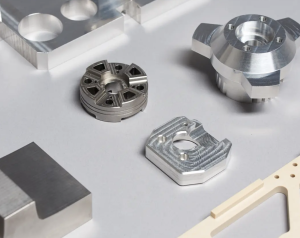Aluminum is a popular material choice for CNC machining applications due to its favorable physical qualities. It is strong, making it suitable for mechanical parts, and its oxidized outer layer resists corrosion caused by the elements. These advantages have made aluminum parts popular in various industries; however, they are especially popular in the aerospace, automotive, healthcare, and consumer electronics sectors.
This article outlines some of the primary benefits of aluminum CNC machining and why it is one of the most popular rapid prototyping and production processes.
Why Aluminum in CNC Machining
Aluminium CNC machining has several advantages over other metals. These advantages include:
Corrosion Resistance
Depending on the quality, aluminum has a strong corrosion resistance, which offers protection against chemical wear and oxidization. 6061 is one of the most corrosion-resistant grades, and it is used in various applications to guard against corrosive environments.
Recyclability
Aluminum is highly recyclable, making it ideal for firms looking to decrease their environmental impact or minimize material waste while saving money. Because of the potentially huge amounts of waste generated by these operations while cutting workpieces, CNC machining applications frequently use recyclable materials.
Strength-to-Weight Ratio
Aluminium is used in many parts because of its great physical features, such as its lightweight yet high-strength nature. Aluminum’s qualities make it excellent for the production of crucial parts in a variety of industries, including automotive and aerospace. Automotive shafts and aviation fittings are two examples of parts that rely on CNC-machined aluminium.
It’s crucial to understand that different grades of aluminium serve different purposes. A general-purpose grade, such as 6061, has a high strength-to-weight ratio that is compatible with a wide range of parts. Meanwhile, maritime and aeronautical applications may require stronger aluminium, in which case a grade like as 7075 may be used.
Electrical Conductivity
Because of aluminum’s excellent conductivity, CNC-machined aluminum pieces are frequently used in electrical components. While not nearly as conductive as copper, pure aluminum can conduct around 37.7 million Siemens per meter at ambient temperature. Certain alloys may have lower conductivity, but aluminum is generally more conductive than stainless steel and other metals.
Machinability
Engineers usually prefer aluminum to other metals due to its machinability. Because this metal is easy to form and chip, it can be correctly and efficiently cut using CNC machining equipment. This high level of machinability decreases the machining job’s timeframe, making the procedure considerably more economical. Furthermore, aluminum’s machinability reduces the possibility of component deformation when cutting the workpiece, resulting in greater precision, accuracy, and repeatability.
Aluminum CNC Machining Processes
Aluminum can be machined using a variety of CNC machining technologies available today. The following are some of these processes:
CNC Milling
CNC milling aluminum processes are the most widely employed in machining CNC aluminum parts. These processes include rotating a multi-point cutting along its axis while the workpiece remains stationary along its axis. The cutting tool, feed motion of either the workpiece, or both of them combined produces cutting action and, as a result, material removal. This motion can be performed along many axes.
CNC Turning
The workpiece rotates in custom CNC Turning operations, but the single-point cutting tool remains stationary along its axis. Depending on either the workpiece, cutting tool or the machine moves against the other to remove material.
Facing
In machining, face turning or face milling is used to create a flat cross-sectional area on the surface of a workpiece.
Pocketing
Pocketing, also known as pocket milling, is a type of CNC Aliuminum Milling Machine in which a hollow pocket is machined in an object.
CNC Drilling
CNC Drilling is the process of creating a hole in a workpiece. A multi-point rotating cutting tool of a specific size goes in a straight line perpendicular to the drilled surface, effectively making a hole.

Please feel free to contact me at any time if you have any questions: Joyce@beisi-rapid.com.
